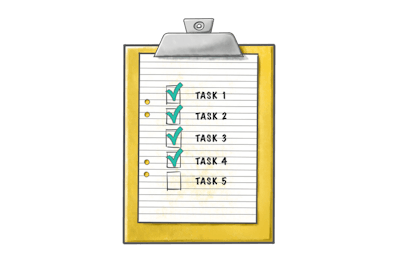A clearly defined campaign goal statement is the starting point of any successful Yarno campaign. The aim of the campaign goal statement is to identify a set of relevant campaign aims that can provide structure and focus throughout the content creation process. Sometimes getting started is the hardest part, but don't worry, we are here to help:
- We are excited to share our content coaching video, all about how to produce a campaign goal statement.
- We summarised the four parts of a campaign goal statement to break down the process of creating one.
- We created a campaign goal statement template resource to use as a starting point when creating your own statement.
First up, check out the content coaching video below.
The four parts of a campaign goal statement
Now you want to start thinking about your own campaign goal statement. At Yarno we find it helpful to think about it in four parts:
1. Desired end result
- This should be a measurable business outcome
- An easy formula to follow is: [business metric] will increase/decrease X% by [date]
- It's ok if there are multiple factors impacting this business outcome — even though the campaign may only target one of these factors, having a clear idea of the desired end result provides focus and a way of assessing the campaign's ROI.
Ask yourself: what’s a tangible metric for assessing the success of this campaign?
Example: Core product sales will increase by 15% by the end of Q3.
2. Target behaviours
- These should be the behaviours that are needed in order to achieve the desired end result.
- Focus on action — what learners need to do, not what they need to know.
Ask yourself: what are learners doing wrong right now, and what should they start doing?
Example: Learners (salespeople) should highlight the features and benefits of core products in their customer conversations; Learners (salespeople) should use up-selling and cross-selling techniques in their customer conversations.
3. Knowledge, skills and understanding
- This is the knowledge, skills, and understanding that learners need in order to overcome existing barriers and adopt the target behaviours
- It's best to target a few specific areas of knowledge that will have a direct impact on the target behaviours — avoid knowledge for knowledge's sake as this isn't the most effective use of learners' time and energy.
Ask yourself: what do learners need to know or understand? What skills do they need to develop?
Example: Learners (salespeople) need to know the primary features and benefits of our core products; Learners (salespeople) need to develop up-selling and cross-selling skills.
4. Specific learning objectives
- These are targeted, specific objectives that represent a successful learning experience.
- Good learning objectives start with verbs.
- Consider how the learning objectives reflect the level of understanding learners will need — using Bloom's Taxonomy can help you identify how complex your objective should be.
Use the structure: “At the end of this campaign, learners will be able to:” followed by a list of outcomes.
Example: At the end of this campaign, learners will be able to: list 5 key features for each product in our core range; Explain the benefits of each of those features as part of a customer conversation; Use at least one up-selling or cross-selling technique in each customer conversation; Analyse customer needs and direct them to a relevant core product.
Do I need to complete a goal statement in this order?
You don't need to complete your campaign goal statement in this order.
You might find you have a clear idea of the behaviours you want to target, but you haven’t identified your desired end result yet. Maybe you’ve thought about what knowledge and skills you want to communicate, but you haven’t thought about the behaviours that will be impacted.
No matter where you start, taking the time to consider each part of the goal statement is the best way to set your campaign up for success.
Resource: Campaign goal statement template
So there you go! Now, do you want to have a go at producing a campaign goal statement but are not sure where to start?
The Yarno content team has created this campaign goal statement template that you can use as a starting point to provide structure and focus when working on a Yarno campaign.
If you have any questions about the template or anything else regarding campaign goal statements, please get in touch with your Yarno Customer Success Manager or Content Creator, or contact us here.
